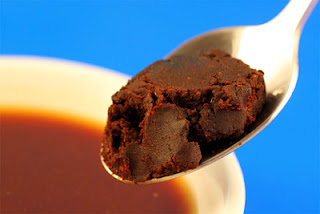“Breakfast like a king, lunch like a prince and dinner like a pauper” says the old proverb.
In reality, many people leading busy lives do exactly the opposite. But when is the ideal time to eat?
In ancient times, the Chinese observed that the body’s organs have peak activity at different times of the day and night. They also suggested that an organ’s minimum activity is 12 hours away from its peak activity.
For example, the peak activity of the stomach is from 7 am to 9 am, and its minimum activity from 7 pm to 9 pm.
According to ancient wisdom, the further away from peak liver activity the meal is taken, the more completely the liver can perform its myriad functions.
If the last meal is eaten at 6 pm, seven hours are available for the food to go through preliminary digestive processes.
Since grains and legumes stay in the stomach for up to three hours, that only leaves three hours for assimilation in the small intestine; the products of assimilation must then be processed by the liver.
Thus, many Far Eastern spiritual practitioners eat one meal a day before noon. In this way, there will be at least 12 hours before the liver has its greatest activity.
One meal per day
Serious Zen monks maintain a single meal per day dietary practice.
They are sufficiently energized by this and their other practices, that their only ‘sleep’ is from midnight until 3 am, during which time they sit in meditation.
Three am is the beginning of the lungs’ two-hour cycle and they consider this to be the ideal time to arise and do breathing exercises.
Many yogis and meditators will naturally rise between 3 am and 5 am, a time when qi and breath vitality is heightened.
Because the body is not burdened by digestion, the eight hour period between 3 am and the single meal at 11 am can be a time of profound spiritual experience.
For most of us, such a lifestyle is not a practical proposition.
Unless the individual is highly disciplined there is a temptation to eat three meal’s worth of food at one time, which may create more problems than it solves.
The one meal per day dietary plan does, however, illustrate two key ideas.
One that eating late at night can cause the liver and its subtle metabolic processes to work less efficiently; and two, that with less food one generally has more energy, greater clarity and a lower need for sleep.
Two meals per day
A two-meal per day schedule is optimum for people who have adjusted to a grain and vegetable diet.
In the morning, there should be one to two hours between rising and eating so that the body and internal organs can adapt from a resting to an active state.
It is best to wait until hungry before eating. Often, hunger will not occur until several hours into the morning.
According to the biological rhythms described by the Chinese clock, the hours between 7 am and 9 am are the optimal time to eat, as they are the most active time for the stomach, although 9 am to 11 am, when pancreatic activity is emphasized, is also a good time.
This meal must be moist enough to help with morning dehydration, and must have sufficient calories, protein and carbohydrates to support you through the most active part of the day.
The first meal should be larger than the second and should be prepared with more water.
The second meal may be eaten in the mid-afternoon or later, preferably at about 3 or 4 pm and certainly before sunset or 7 pm, whichever comes first.
In ancient China, sunset was seen as heralding more internal metabolic and hormonal processes.
In addition, according to the Chinese clock, at 7 pm the stomach begins its period of weakest activity. As the second meal is moved later in the day to accommodate work, the quantity should become less. When later meals are eaten, it is best to stay up for at least 4 hours afterwards.
Three meals per day
Eating three meals per day is probably the most practical option for the majority of people.
When you have been raised on three meals per day, it is best to stick with this routine unless the body signals it is time for a change. This normally occurs when the pancreas, liver, adrenals and other organs are sufficiently healed to create stability in blood sugar levels.
Three meals per day are necessary for most people’s low blood sugar conditions.
Ideally, the first meal is eaten during the stomach interval between 7 am and 9 am. It is best if this meal is warm and moist.
The second meal, usually at noon or shortly thereafter, can be the largest meal of the day and requires more variety.
The last meal should be the smallest. Ideally it should contain a concentrated protein such as legumes, nuts or seeds. It is eaten at least 4 hours after the second meal and before 7 pm.
Interestingly, scientific evidence published in the journal Obesity, indicates that eating out of synchrony with the body's natural rhythms, may lead to weight gain.
If you have enjoyed this post and would like to
keep in touch please sign up for my free email newsletter.
Reference
Healing with Whole Foods. Asian Traditions and Modern Nutrition. Paul Pitchford.



























